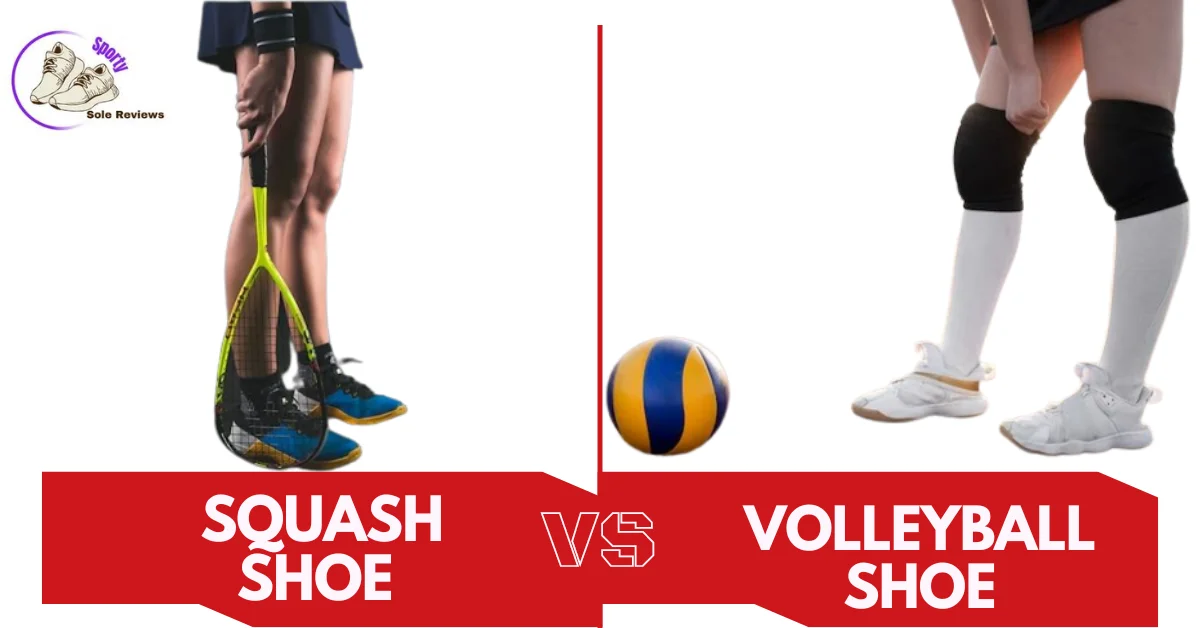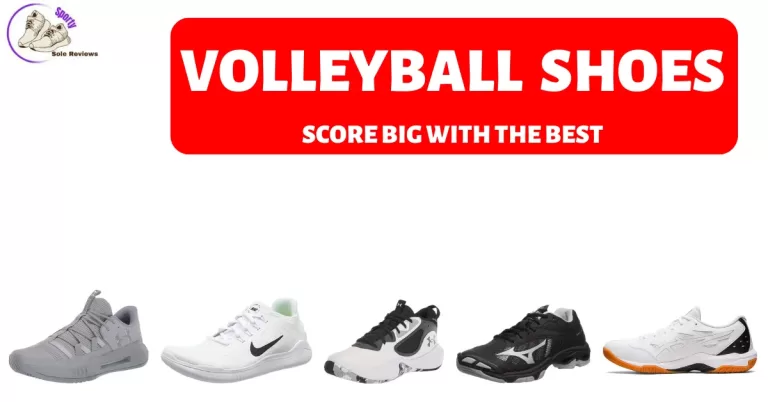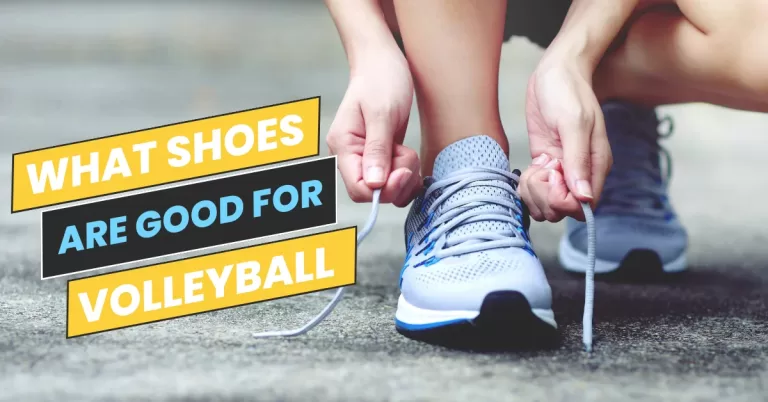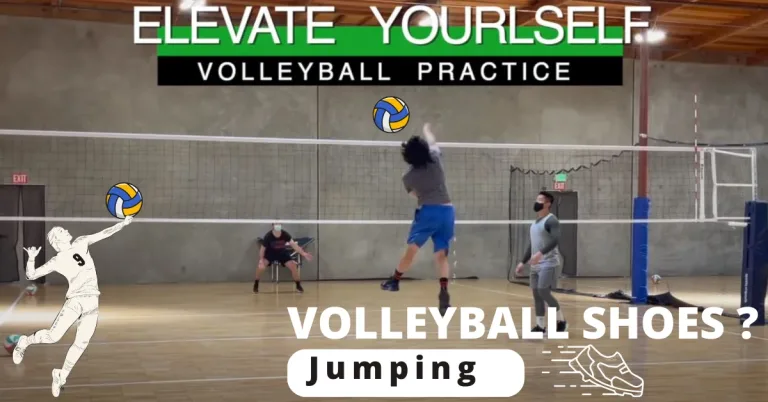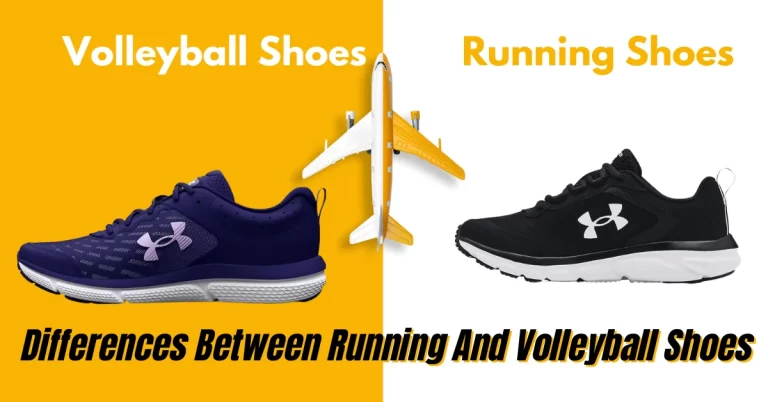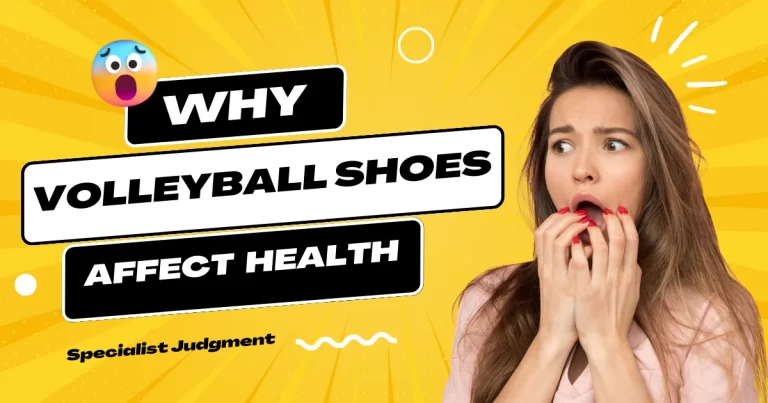Are Volleyball Shoes Suitable for Playing Squash? case a point
In the world of indoor sports, the significance of proper footwear cannot be overstated. Squash, a fast-paced game demanding agility and precision, is no exception. The question at hand, “Are Volleyball Shoes Suitable for Playing Squash?” merits our attention. Intriguingly, volleyball and squash shoes share some common traits, but delving deeper reveals nuanced disparities that can impact your performance and safety on the court.
Understanding the Differences between Volleyball and Squash Shoes
As a sporty man, I will tell you about the key design features of both types of shoes to help you understand the query Are Volleyball Shoes Suitable for Playing Squash?
Key Design Features of Volleyball Shoes:
- Sole Construction and Grip Patterns: Volleyball shoes are equipped with a gum rubber sole that provides excellent traction on indoor courts. The unique herringbone or wave-like patterns on the outsole allow for multidirectional movements, crucial for quick changes in direction during volleyball games.
- Cushioning and Impact Absorption: Volleyball involves frequent jumping and landing, making cushioning a top priority. Volleyball shoes are designed with ample shock-absorbing materials to reduce the impact on joints and muscles, ensuring optimal comfort and support throughout the game.
- Lightweight and Flexibility: Agility and swift movements are integral to volleyball. As such, these shoes are crafted to be lightweight and flexible, enabling players to move swiftly across the court with ease.
Key Design Features of Squash Shoes:
- Non-Marking Outsoles: Squash shoes feature non-marking rubber outsoles that prevent scuffing and marking the squash court, maintaining its pristine surface.
- Lateral Support and Stability: Squash requires lateral movements and sudden shifts in weight. Therefore, squash shoes are designed with reinforced lateral support and stability features to prevent ankle injuries and offer better control during quick lateral movements.
- Enhanced Traction for Quick Movements: Squash shoes come with a unique gum rubber outsole that offers superior grip on indoor surfaces, facilitating rapid changes in direction and preventing slips during intense rallies.
The Impact of Footwear on Performance in Squash
Squash is a dynamic and fast-paced sport that demands agility and quick movements on the court. Your choice of footwear can significantly influence your performance and overall experience.
Importance of Agility and Quick Movements in Squash:
In squash, agility is key to success. Players need to move swiftly, make split-second decisions, and react to the opponent’s shots with precision. The right footwear should enable seamless transitions, allowing you to glide effortlessly across the court and maintain your competitive edge.
How Improper Footwear Affects Performance:
Using unsuitable footwear, such as volleyball shoes, can have detrimental effects on your squash performance. Volleyball shoes lack the specific design features needed for the lateral movements and sharp turns in squash. Inadequate support and traction may lead to slips, inhibiting your ability to respond quickly and compromising your game.
Avoiding Injuries and Strains with Suitable Shoes:
Investing in proper squash shoes is crucial for injury prevention. The unique design of squash footwear includes lateral support, ankle stability, and enhanced traction, all of which reduce the risk of strains and sprains during intense matches. Proper cushioning also absorbs impact, protecting your feet and joints from excessive stress.
Advantages of Using Volleyball Shoes for Squash
When it comes to sports like squash, having the right footwear is essential for maximizing your performance and minimizing the risk of injury.
Similarities between Volleyball and Squash Movements:
Volleyball and squash both demand quick and agile movements. Players need to make rapid direction changes, swift lateral shifts, and lightning-fast responses to their opponent’s moves. These shared movement patterns make volleyball shoes an interesting contender for squash enthusiasts.
Benefits of Lightweight Shoes in Quick Direction Changes:
Volleyball shoes are designed to be lightweight, allowing players to move with agility and precision. In squash, where quick direction changes can mean the difference between victory and defeat, lightweight footwear can enhance your ability to react swiftly and maintain a competitive edge.
Impact of Cushioning and Shock Absorption on Court Impact:
Both volleyball and squash involve intense footwork and frequent jumping, putting strain on your joints and muscles. Volleyball shoes are equipped with cushioning and shock absorption technology, which reduces the impact on your feet and minimises the risk of injuries during high-impact moves.
Analysing the Traction Patterns of Volleyball Shoes:
Volleyball shoes often feature specialised traction patterns that provide superior grip on indoor courts. Squash courts demand quick stops, starts, and lateral movements, and the traction offered by volleyball shoes can aid in maintaining stability and preventing slips.
Limitations of Volleyball Shoes for Squash and get perfect answer To “Are volleyball shoes suitable for playing squash?”
While volleyball shoes may excel on the volleyball court, they come with certain limitations when it comes to playing squash. Understanding these drawbacks can help you make an informed decision about whether volleyball shoes are suitable for playing squash.
Lack of Lateral Support in Volleyball Shoes:
Volleyball shoes are primarily designed for forward and backward movements, catering to the specific needs of volleyball players. However, in squash, lateral movements are frequent and crucial. Volleyball shoes may lack adequate lateral support, which can lead to instability during quick lateral shifts, affecting your overall performance and potentially increasing the risk of injury.
Potential Damage to the Squash Court Surface:
Squash courts are made of delicate materials to ensure the right amount of grip and slide for players. Volleyball shoes, with their specific traction patterns, might not be optimised for use on squash courts. Using volleyball shoes in squash could result in unnecessary wear and tear on the court surface, which may not only impact your gameplay but also incur extra costs for court maintenance.
Impact on Ankle Stability During Lateral Movements:
Squash demands rapid and agile lateral movements, putting significant strain on your ankles. Volleyball shoes may not provide the required ankle stability for these intense movements, potentially increasing the risk of sprains or strains.
Selecting the Right Shoes for Squash
Finding the perfect pair of squash shoes is essential for optimizing your performance on the court and preventing injuries. While some may wonder, are volleyball shoes suitable for playing squash, it’s crucial to understand Are Volleyball Shoes Suitable for Playing Squash? Here are the key factors to consider when choosing squash shoes:
Outsole Type and Traction Patterns:
A quality squash shoe should have a non-marking gum rubber outsole that offers excellent traction on indoor court surfaces. Look for shoes with strategic traction patterns, such as herringbone or wave-like designs, that allow for swift lateral movements and quick direction changes.
Cushioning and Midsole Technologies:
Squash involves repetitive high-impact movements, making cushioning a vital aspect of squash shoes. Opt for footwear with advanced midsole technologies, like EVA or gel cushioning, to absorb shock and reduce stress on your joints during intense rallies.
Upper Materials and Support Features:
The upper materials of squash shoes should provide a balance of breathability and support. Look for shoes with sturdy overlays and reinforced areas to offer lateral support during rapid lateral shifts. A well-designed upper also helps stabilise the foot, reducing the risk of injuries.
Conclusion:
Selecting the right footwear in sports like squash is vital for safety and performance. While volleyball shoes may seem tempting, investing in specialized squash shoes with features like lateral support and cushioning is essential for excelling on the court. Prioritize your game and protect yourself with the right shoes! Hope fully you under stand this query Are volleyball shoes suitable for playing squash?
Are Volleyball Shoes Suitable for Playing Squash?
While volleyball shoes have their strengths, they lack specific features needed for squash, like lateral support and traction patterns. It’s best to choose squash-specific footwear for optimal performance.
What are the key differences between volleyball and squash shoes?
Volleyball shoes are designed for quick lateral movements and jumping, focusing on shock absorption and stability on a flat, smooth surface. Squash shoes, on the other hand, are tailored for the high-intensity, stop-and-start movements required in squash, featuring gum rubber outsoles for superior grip on indoor court surfaces.
Can I use volleyball shoes for squash if I’m a beginner or playing casually?
If you’re just starting or playing squash casually, using volleyball shoes temporarily might be acceptable. However, be aware that they lack the grip and support needed for squash, which could increase your risk of injury and hinder your performance.
What issues can arise from using volleyball shoes for squash?
Using volleyball shoes for squash can lead to reduced traction on the court, increased likelihood of slipping or twisting your ankle, and discomfort due to inadequate cushioning and lateral support. These factors may impact your overall playing experience and potentially lead to injuries.
Are there any alternatives to squash-specific shoes for playing squash?
Yes, you can consider indoor court shoes or non-marking court shoes designed for sports like badminton, racquetball, or indoor tennis. These shoes offer better traction and support on the squash court than volleyball shoes.

